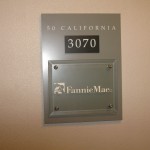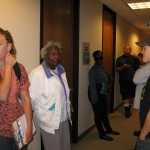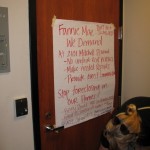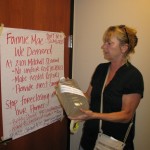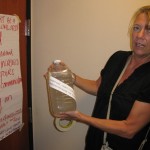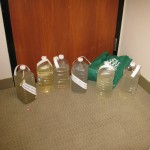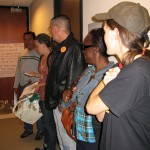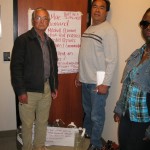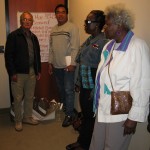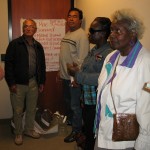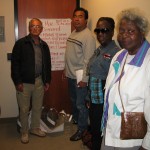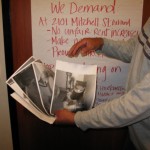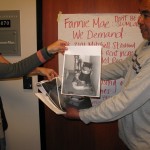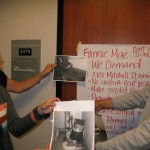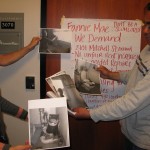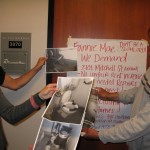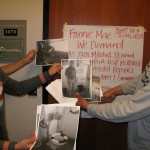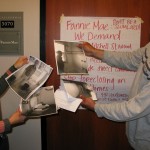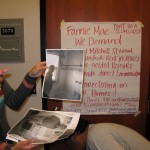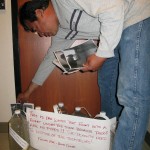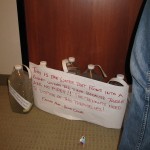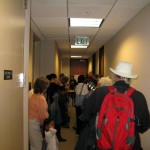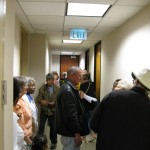by Stardust, draft of November 17, 2011
What’s a Mortgage?
In a capitalist economic system, a mortgage is a legal agreement in which a person borrows money to buy property, such as a house. Beyond any cash down payment provided by the buyer, a mortgage loan from a bank usually covers the remainder of the purchase price of the home.
Once the buyer completes the purchase of the property, then the buyer must pay off the principal and interest on the loan, usually in monthly payments to a bank. The principal at the beginning of the loan represents the purchase price of the property, sometimes also including fees required to complete the purchase. As the buyer pays down the principal on the loan, the buyer gains equity, or a greater ownership share in the property. The buyer doesn’t really own the property until the mortgage is paid off completely; until then, the buyer actually shares ownership with the bank, even if the bank employees aren’t living there.
The bank often makes a profit on the loan through the interest paid by the buyer, which is a certain percentage cost above and beyond the property purchase price and fees. The bank and other service providers, such as real estate agents, assessors, and deed verifiers and recorders, may also make a profit from fees charged for the property purchase.
In a corporate welfare capitalist system, the banks profiteer off the backs of working people who are just trying to keep a roof over their heads. They add no real value to the the housing system or to the provision of any of the other basic needs of the people. In fact, the banks regularly turn people out of their homes, forcing them into a competitive housing rental market, into overburdened shelters, or onto the streets.
As long as the buyer has enough money to make loan payments to the bank each month, the buyer continues to own a share of the property. However, if the buyer can no longer make loan payments, for example because of losing a job or having large healthcare costs, then the bank notifies the buyer of a default on the mortgage. If this default continues, the bank can either make a deal with the buyer to restructure the loan with a loan modification or can foreclose on the mortgage and evict the buyer and any other residents from the property to resell the property. The bank often holds a foreclosure auction to try to recover the amount due on the loan or more, but ends up with a Mem>Real Estate Owned (REO) property if the auction is unsuccessful.
If the buyer defaults on the loan, the buyer may not only lose the property, but also all the principal and interest payments on the mortgage made up to that point. If the property is an owner-occupied home rather than an investment property, then the “owner” and the other people living there may end up out on the street with no money, despite having paid a mortage for potentially many years. The negative credit report of a buyer who has faced foreclosure may make it difficult for that buyer to borrow funds from banks or other lenders in the future. In the case of an investment property, any tenants renting the property from the buyer will very likely end up evicted during the foreclosure process.
Why Is There a Mortgage Crisis?
As a result of lax regulation of financial institutions and a downturn of the corporate welfare capitalist economy, many people with mortgages in the U.S. faced a crisis starting in 2007. The lack of regulation permitted banks to engage in predatory lending that set up buyers with mortgages that had unrealistic payment plans: for example, adjustable-rate mortgages (ARMs) with interest payments that increased over the term of the loan and balloon payment mortgages which had a large payment that came due at a certain point when paying back the mortgage. With skyrocketing unemployment, underemployment, and healthcare costs, many property “owners” found themselves no longer able to make their mortgage payments to the banks. They therefore faced foreclosure, in other words, seizure of the property by the institution that provided the mortgage.
A mortgage is said to be “upside down” or “under water” when the value of the property is less than the principal due on the mortgage. For example, if Joanna came up with a $25,000 down payment and a mortgage for the remainder of the $250,000 purchase price, including fees, for a one-bedroom house in the Bayview in 2001, then the mortgage principal at the start of the loan would be $225,000. If the assessed value of the home decreased from around $250,000 in 2001 to around $150,000 by 2008, then the $225,000 principal on Joanna’s loan would exceed the $150,000 estimated value of the house. Joanna’s mortgage would be “upside down” or “under water” and she would be paying principal for home value that no longer exists.
Mortgage Crisis History
The U.S. Congress’ repeal of the Glass-Steagall Act in 1999 made it possible for banks to create mortgage-backed securities and structured investment vehicles sometimes considered part of a shadow banking system in the U.S. So-called subprime loans increased from 5% of all mortgage lending in 1998 to nearly 30% by 2008.
{add more on role of Fannie Mae (Federal National Mortgage Association) and Freddie Mac (Federal Home Loan Mortgage Corporation)???}
It became common practice in the industry to “robosign” many thousands of foreclosure documents without verifying the documents were accurate. As a result, JPMorgan Chase & Co. and Ally Financial Inc.’s GMAC mortgage unit said in fall 2010 they would stop repossessions in 23 states where courts supervise home seizures and Bank of America Corp., the largest U.S. lender, froze foreclosures nationwide. [7] This prompted investigations in all 50 states about “whether banks and loan servicers used false documents and signatures to justify hundreds of thousands of foreclosures” and questioning other mortgages practices such as the loan modification process, barring foreclosures during loan modifications, and creating a fund to compensate victims of wrongful foreclosures. [7]
{add more on Federal bailout process??? Lack of implementation of loan modifications (federal report noting only 1/6 of those loans eligible being modified by banks)???}
Foreclosure Frequency
In 2010, for the first time in U.S. history, banks foreclosed on more than one million homes in one year. Five states – California, Florida, Arizona, Illinois and Michigan – accounted for more than half of all foreclosure activity in 2010. Compare this to 2005 when banks foreclosed on about 100,000 houses. [13]
By September 2011, the states in the U.S. with the highest foreclosure rates included Michigan, Florida, Georgia, California, Nevada, and Arizona, with as many as one of every 118 housing units experiencing foreclosure in some of these states. California alone had 51,842 foreclosure filings in the month of September 2011. Throughout the U.S., just over 1.5 million homes faced foreclosure with sales prices averaging at just over $173,000. Nationwide an average of one of every 605 housing units received a foreclosure filing that month. [4]
{add more on number and/or rate of home evictions in United States??? California??? international situation???}
In San Francisco, notices of default and notices of sale have trended at about 180 per month during the year ending September 2011. [5]
{add more on number and/or rate of home evictions in San Francisco???}
{add more on what happens to those who face foreclosure??? declining rate of home ownership??? composition of rental market??? rates of homelessness??? people living on the streets??? in shelters???}
Foreclosure Process
In California, the foreclosure process has the following steps [2]:
1. Notice of Default. Bank sends borrower initial notice of failure to meet terms of loan.
2. Notice of Trustee Sale. Sets date for auction, can be recorded three months after Notice of Default.
3. Auction. Can be scheduled for only 20 days after Notice of Trustee Sale is recorded.
4. Four possible next steps:
a. Postponed. Auction may be postponed for up to one year, then go back to auction.
b. Sold to Bank.
c. Sold to Third Party.
d. Cancelled.
5. Trustee’s Deed. If step 4.b or 4.c occurs, then a trustee’s deed transfers the property to a new owner.
Arizona, Nevada, Oregon, and Washington have similar foreclosure processes, although Arizona apparently doesn’t require a Notice of Default. [3]
Mortgage Activism
What can be done?
1. Let home “owners” who face mortgage defaults know they can fight back.
Activists may organize campaigns to let home “owners” know that there are people and organizations who want to help keep them from losing their homes. Activists may set up meetings where people can tell their stories, share strategies and resources, and receive assistance. The more people facing foreclosures and evictions can share their stories, the more likely activists can organize to prevent the unfortunate consequences of predatory lending practices.
2. Pressure banks to restructure or forgive mortgage loans.
In this time of crisis when the banks have received massive bailouts from the taxpayers, a buyer of an owner-occupied home who has already made principal payments on a mortgage that cover the current assessed value of the property should be able to negotiate payment forgiveness or postponement of any remaining mortgage payments.
Even if the buyer hasn’t paid enough mortgage principal to cover the assessed value of the property, the buyer should be able to negotiate a mortgage principal reduction to the assessed value of the property or principal forgiveness during this time of crisis.
A number of nonprofit organizations and governmental agencies may be able to assist buyers in restructuring their mortgages.
Activists may assist buyers by publicizing the unfairness of placing the burden of the mortgage crisis on property “owners” who face foreclosure and eviction from their homes. Activists may meet with bank staff and/or organize protests at bank offices to pressure bank staff to restructure or forgive mortgages.
3. Reoccupy homes that banks seek to foreclose to provide housing for the people who have paid a mortgage on that home.
In cases where a bank is not open to reasonable mortgage restructuring or forgiveness to keep buyers of owner-occupied homes in their homes, then activists may assist home “owners” by publicizing foreclosures and pending evictions, disrupting foreclosure auctions, preventing evictions through direct action, and assisting owner occupants in occupying or reoccupying their homes. A network of activists could be on call in each neighborhood to provide such assistance on a regular basis as needed.
4. Occupy homes that banks have foreclosed to provide housing for homeless people.
For foreclosed homes where the owner occupant is no longer involved, activists may negotiate with banks and local governments to provide the foreclosed housing for homeless people. Activists may occupy homes through direct action as needed to provide housing for the homeless.
5. Improve bank regulation and enforcement so that banks can no longer engage in predatory lending practices.
Action History
- Winter 1983, in Ontario, Canada – Neighbors of farmer John Otto pushed the bank’s auctioneer off the foreclosed farm and instead held a “penny auction” planned by “radical farmer” Allen Wilford. [6]
- Sep 2008, in Boston(?) – People arrested protesting allegedly fraudulent activity leading to home foreclosure. [1]
- December 16, 2010, in Los Angeles – Dozens of people with the Alliance of Californians for Community Empowerment (ACCE), a statewide community organizing group, protest in front of Bank of America office regarding foreclosures and confusing or manipulative loan modification practices; 22 people arrested for blocking entry to downtown L.A. branch of Chase bank [8] [9] [10] [11]
- December 20, 2010, in Clayton, Missouri – Eighty people with Missourians Organizing for Reform and Empowerment (MORE) protest at Bank of America branch; six people arrested. [12]
- December 23, 2010, in Springfield, Massachusetts – The “No One Leaves Coalition” protested a foreclosure auction of the Ramos family home. [16]
- February 22, 2011, in Springfield, Massachusetts – The “No One Leaves Coalition” successfully protested to halt a foreclosure auction of the Williams family home. [14] [15]
- May 14, 2011, in Boston – 350-400 protest the policies of Bank of America and other large banks who have refused to modify mortgages of homeowners facing foreclosure. [1]
References
[1] “Foreclosure Protests Continue to Grow”, National Lawyers Guild, May 2001, http://www.nlgmass.org/2011/05/foreclosure-protests-continue-to-grow/
[2] “California Foreclosure Process”, Foreclosure Radar, http://www.foreclosureradar.com/ca-foreclosure-process
[3] “Arizona Foreclosure Process”, Foreclosure Radar, http://www.foreclosureradar.com/az-foreclosure-process
[4] “National Real Estate Trends”, RealtyTrac, September 2011, http://www.realtytrac.com/trendcenter/trend.html
[5] “San Francisco County Foreclosure Trends”, ForeclosureRadar, September 2011, http://www.foreclosureradar.com/california/san-francisco-county-foreclosures
[6] “Hunger Striker Protests Family Farm Foreclosures”, CBC/Radio-Canada, March 16, 1983, http://archives.cbc.ca/politics/rights_freedoms/clips/11811/
[7] “Foreclosure Probe Talks Expanded to Include Investors Urging Resolution”, Bloomberg, November 25, 2010, http://www.bloomberg.com/news/2010-11-24/state-foreclosure-probe-talks-include-mortgage-investors-urging-quick-deal.html
[8] “Foreclosure Protests in Downtown L.A. Pit Troubled Homeowners against a Banking Goliath”, January 12, 2010 [ed. — probably should be 2011], http://www.dailymotion.com/video/xfvxqw_foreclosure-protests-in-downtown-l-a-pit-troubled-homeowners-against-a-banking-goliath_news
[9] “Los Angeles Homeowners Take to the Streets to Protest Foreclosure Abuses”, Huffington Post, November 5, 2011, http://www.huffingtonpost.com/peter-dreier/los-angeles-homeowners-ta_b_795665.html
[10] “22 Arrested in Los Angeles Foreclosure Protest at Chase”, Associated Press, December 17, 2010, http://www.thegrio.com/money/22-arrested-in-la-foreclosure-protest-at-chase.php
[11] “Calif. Foreclosure Protest Leads to 22 Arrests”, Associated Press, December 17, 2010, https://www.youtube.com/watch?v=7nE-ggv7CZ4
[12] “More Arrests as Foreclosure Protests Spread”, People’s World, December 22, 2010, http://peoplesworld.org/more-arrests-as-foreclosure-protests-spread/
[13] “U.S. 2010 Home Foreclosures Top 1 Mln for First Time”, Reuters, January 13, 2011, http://www.reuters.com/assets/print?aid=USN1324157220110113
[14] “Home Saved Following Protest”, 22News, February 22, 2011, http://www.wwlp.com/dpp/news/local/hampden/Home-saved-following-protest
[15] “No One Leaves to Protest Williams Family Foreclosure Auction”, Springfield No One Leaves/Nadie Se Mude, March 17, 2011, http://www.springfieldnooneleaves.org/?p=403
[16] “Ramos Foreclosure Auction Protest”, Springfield No One Leaves/Nadie Se Mude, December 23, 2010, https://www.facebook.com/media/set/?set=a.156976737689148.58403.156554894397999&type=1
Organizations
Center On Housing Rights and Evictions: an independent, international, non-governmental, not-for-profit human rights organisation whose mission is to ensure the full enjoyment of the human right to adequate housing for everyone, everywhere; headquarters in Geneva, Switzerlands, with offices around the world. http://www.cohre.org/
Plataforma de Afectados por la Hipoteca (Platform of Those Affected by Mortgages): an organization engaging in civil disobedience to prevent home evictions and to return families after evictions to squat in their foreclosed homes; Spain. https://afectadosporlahipoteca.wordpress.com/
Glossary
coming soon…
adjustable-rate mortgages —
assessed value —
balloon payment —
bankruptcy —
credit report —
deed —
default —
equity —
eviction —
Fannie Mae – see Federal National Mortgage Association
Federal Home Loan Mortgage Corporation —
Federal National Mortgage Association —
foreclose —
foreclosure —
foreclosure auction —
forgiveness – cancellation of a loan
Freddie Mac – see Federal Home Loan Mortgage Corporation
interest —
investment property —
lien —
loan —
mortgage —
owner-occupied —
predatory lending —
principal —
principal reduction —
profit —
purchase price —
Real Estate Owned (REO) property – a property owned by a bank, other lender, government agency, or government loan insurer, after an unsuccessful foreclosure auction
refinance —
repossession —
short sale – sale of a property in which the amount received from the sale would not cover the debts related to the property, in other words, the liens on the property
subprime mortgages —
third party —
trustee sale —
under water —
upside down —










